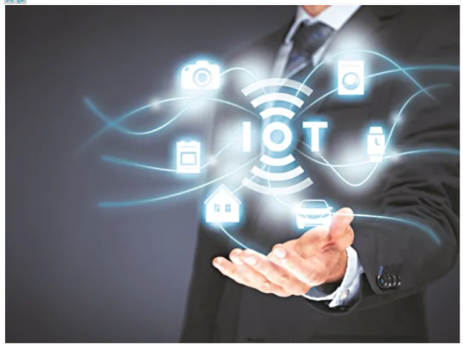K
Kathleen Martin
Guest
Internet of things (IoT) broadly means “All objects, which are connected to the web, will be enabled to share and process data through their sensors and communication devices independently”. It is estimated that by 2023, globally there may be 7 billion connected people, more than 30 million applications and embedded systems, more than 60 trillion GBs of data and around 8 trillion revenue opportunity. The IoT market value is expected to reach $11 trillion with security spending reaching $3.5 billion shortly.
The history of IoT evolution started with archaic mode of interaction between human and thing (people and things), followed by interaction of machine and machine (things and things), leading to interaction of people kicking off through proverbial internet (people and people), resulting in multiple things getting connected on net (web of things) and then finally the internet of humanity.
IoT in agriculture basically involves the network wherein physical components in the sector is to be connected with internet which may be the farms comprising trees, plants, and animals, the tools and various objects in the sector. This enables information exchange, monitoring and tracking, helping humans manage complex agricultural sector more productively under certain protocols. For example, most of the developed countries such as Germany, Japan and US has already moved ahead in sensor technology and manufacturing processes. The net benefit of IoT application is the increased agricultural
output, improved quality of agricultural products, reduced labour costs coupled with increased agricultural income for farmers.
Continue reading: https://www.business-standard.com/article/technology/internet-of-things-may-revolutionise-the-agricultural-sector-122040700216_1.html
The history of IoT evolution started with archaic mode of interaction between human and thing (people and things), followed by interaction of machine and machine (things and things), leading to interaction of people kicking off through proverbial internet (people and people), resulting in multiple things getting connected on net (web of things) and then finally the internet of humanity.
IoT in agriculture basically involves the network wherein physical components in the sector is to be connected with internet which may be the farms comprising trees, plants, and animals, the tools and various objects in the sector. This enables information exchange, monitoring and tracking, helping humans manage complex agricultural sector more productively under certain protocols. For example, most of the developed countries such as Germany, Japan and US has already moved ahead in sensor technology and manufacturing processes. The net benefit of IoT application is the increased agricultural
output, improved quality of agricultural products, reduced labour costs coupled with increased agricultural income for farmers.
Continue reading: https://www.business-standard.com/article/technology/internet-of-things-may-revolutionise-the-agricultural-sector-122040700216_1.html

